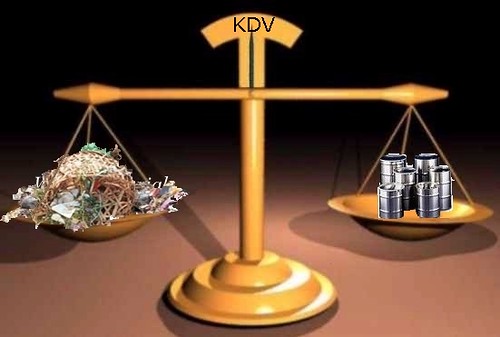(Source: Los Angeles Times)
As the state moves to reduce the carbon footprint of fuel, an engineer hopes to build a plant in Lancaster that will convert garbage into an alcohol-based mixture.
Arnold Klann has a green dream.
It began 16 years ago in a sprawling laboratory in Anaheim. This year, he hopes, it will culminate at a Lancaster garbage dump. There, in the high desert of the Antelope Valley, Klann’s company, BlueFire Ethanol Fuels, plans to build a $100-million plant to convert raw trash into an alcohol-based fuel that will help power the cars and trucks of the future.

It’s just the sort of improbable concoction that California is now demanding. On Thursday, the state is expected to adopt the world’s first regulation to reduce the carbon footprint of fuel. And, just as California created the first market for catalytic converters decades ago, this rule, a likely model for national and even global calculations, could jump-start a huge demand for new technologies.
Fuel is a critical front in the battle against global warming. Nearly a quarter of the man-made greenhouse gases that the United States spews into the atmosphere comes from transportation. And although cars have reduced unhealthy pollutants such as nitrogen oxides by 99% in recent decades, the gasoline they burn emits as much carbon dioxide as it did a century ago.
California’s proposal “is the first time anyone has attempted, for environmental purposes, to change the content of what goes into cars and trucks,” says Mary D. Nichols, state Air Resources Board chairwoman. “It would revolutionize transportation fuel.”

President Obama has also called for a low-carbon standard for the nation’s $400-billion transportation fuel market. A version similar to California’s is incorporated in climate legislation pending before Congress.
But by measuring the “cradle-to-grave” effect of various fuels, the new rule would favor ethanol such as Klann’s, made from non-food sources. Even “low-carbon” corn ethanol — such as the kind produced in California using gas-fired electricity and efficient machinery — has a far higher carbon footprint than so-called cellulosic fuel from landfill waste, trees, switchgrass or sugar cane.
“This is fantastic for us,” said Klann, who uses recycled sulfuric acid to transform paper, construction debris and grass clippings into ethanol. “The paradigm is changing from oil to sustainable fuels. The ones with the lowest carbon footprint will be the winners.”
By 2020, the air board estimates, new-technology fuels along with electricity to power hybrid and electric cars would replace a quarter of the gasoline supply. And that is a critical element of the state’s sweeping plan to reduce its global warming emissions.
Battered corn ethanol investors have mounted an intense lobbying effort against California’s proposal. Several, including Pacific Ethanol, California’s biggest, had planned to diversify from corn into cellulosic ethanol. They argue that by diminishing the value of their existing plants, the new rule also would cripple their advanced biofuel efforts.
At issue is the Air Resources Board’s complex modeling, which would calculate each fuel’s carbon footprint not only by its “direct” emissions from drilling or planting to refining to burning, but also “indirect” emissions caused by clearing forests or fields to compensate for food crops such as corn or soy that are diverted to fuel. Opponents say the science behind the indirect modeling is inaccurate.
Among entrepreneurs like Klann, the mood has never been more hopeful. In an Anaheim lab, the 57-year-old electrical engineer guides a visitor through a maze of pipes, filters, heat exchangers, fermentation tanks and vats of acid like a small boy showing off a chemistry set. “We’re in the forefront of this industry,” he said of his patented “concentrated acid hydrolysis” process. “We expect to have the first plant to produce cellulosic ethanol on a commercial scale.”
Financing for his Lancaster plant, which recently obtained its final permits, has been delayed by the credit crunch. But if it comes through, the facility will process 170 tons of garbage a day to produce 3.7 million gallons of ethanol a year. Estimated cost per gallon: about $2, Klann says.
He already has plans for 20 more facilities across the country. Next on the block: a plant outside Palm Springs, partly funded by the U.S. Department of Energy, that would produce 19 million gallons annually.
Click here to read th entire article. For interested readers, here is a TransportGooru article on California’s ambitious new fuel regulation standards.
Tightening the “Green” Screw! California regulators consider instituting first-in-the nation low-carbon fuel standards






